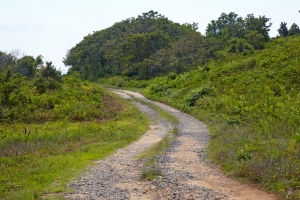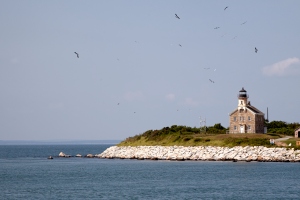For many decades, mystery and intrigue have surrounded this island off Long Island’s North Fork. For the first time, a new book chronicles “the world’s most mysterious island.”

History of Plum Island Now Available
The Southold Historical Society has published A World Unto Itself: The Remarkable History of Plum Island, New York, which encompasses nearly 400 pages of new research and revealing photographs. “Historically, ecologically, and scientifically, it is unlike any other island anywhere in the world,” said Ruth Ann Bramson, who wrote the book along with Southold Historical Society Director Geoffrey K. Fleming and Collections Manager Amy Kasuga Folk.
Four Hundred Years of History
After the Montaukett tribe sold Plum Island to an Englishman in 1659 for a coat and a few tools, it was owned for 250 years by a handful of families who farmed, raised livestock, and persevered through both the American Revolution and the War of 1812. In the late 1800s, its remoteness and isolation made Plum Island popular among the wealthy, who sought relaxation and escape from hectic city life at rustic fish camps there.
Little by little, farming families sold off their land to men with plans to develop the island as a summer resort. Instead, however, the Spanish-American War sparked concern about U.S. coastal defenses. And as the century turned, Plum Island was transformed into Fort Terry, a heavily armed military installation where activity waxed and waned through two World Wars. It was during that era that it served as the site of one of the most infamous court martials of the 20th century, one that would effectively sanction the exclusion of homosexuals from the military for decades to come.
For the 60-plus years since the Army’s departure, research conducted at the Plum Island Animal Disease Center has generated numerous breakthroughs in the diagnosis and prevention of animal diseases worldwide—including the first vaccine for foot-and-mouth disease legal to manufacture on U.S. soil.

Through its many incarnations, Plum Island has managed to remain in a semi-natural state. Today, it provides a rare glimpse of what Long Island and much of the Northeast was like centuries before. At the same time, it bears the marks of the human history that has unfolded there: the lighthouse tended by so many stalwarts, the narrow roads, rusted railroad tracks, and overgrown artillery batteries once filled with soldiers who never saw combat, and the modern-day scientific facility. With Plum soon to be up for auction to the highest bidder, as the animal research facility moves to Manhattan, Kansas, non-profit organizations are working with partners in the state and federal government to help preserve the natural beauty and wild habitats of the island.
A World Unto Itself is available online through Amazon.com. For more information on this book, please contact the Southold Historical Society at (631) 765-5500 or visit them online at www.southoldhistoricalsociety.org. For more information about how you can get involved in the fight to preserve Plum Island, visit preserveplumisland.org.
This post was written by Ruth Ann Bramson, co-author of A World Unto Itself.
